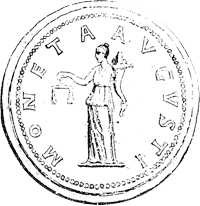Serd Mint: An Exceptionally Rare Specimen







Greek Italy. Southern Lucania, Serd. AR Stater, c. 500-475 BC. Obv. Dionysos standing left, holding vine-tendril and kantharos; to left, [MEP]. Rev. Vine tendril and bunch of grapes. L. Brousseau, Le monnayage des Serdaioi revisité, in RN 2010, pp. 257-285; Campana 1; HN Italy 1717; BMC (Uncertain Bruttium) 1. 7.52 g. 24.5 mm. RRRR. Marks and scratches. Extremely rare, possibly the fourth known and one of the few offered for sale; all from the same pair of dies. For comparison, see the two examples preserved in museum collections (Paris and the British Museum). F. The Serdaioi coinage is based on the Achaean-Corinthian standard, with a Stater divided into three drachms. The ethnic on the coins is attested elsewhere only on an inscription on a bronze sheet, found in the archaeological excavations of Olympia in 1960, near the Sybaris treasure. The inscription, which is of great interest and probably dates from after the destruction of Sybaris in 510, documents an agreement between the Sybarites and the Serdaioi, witnessed by Zeus and Apollo and the city of Poseidonia. Based on the limited information we have, we can deduce that the population was concentrated in an area between Sybaris and Poseidonia, on a stretch of coastline in Lucania, affected by the displacement of Sybarite refugees fleeing the destruction of their city.


